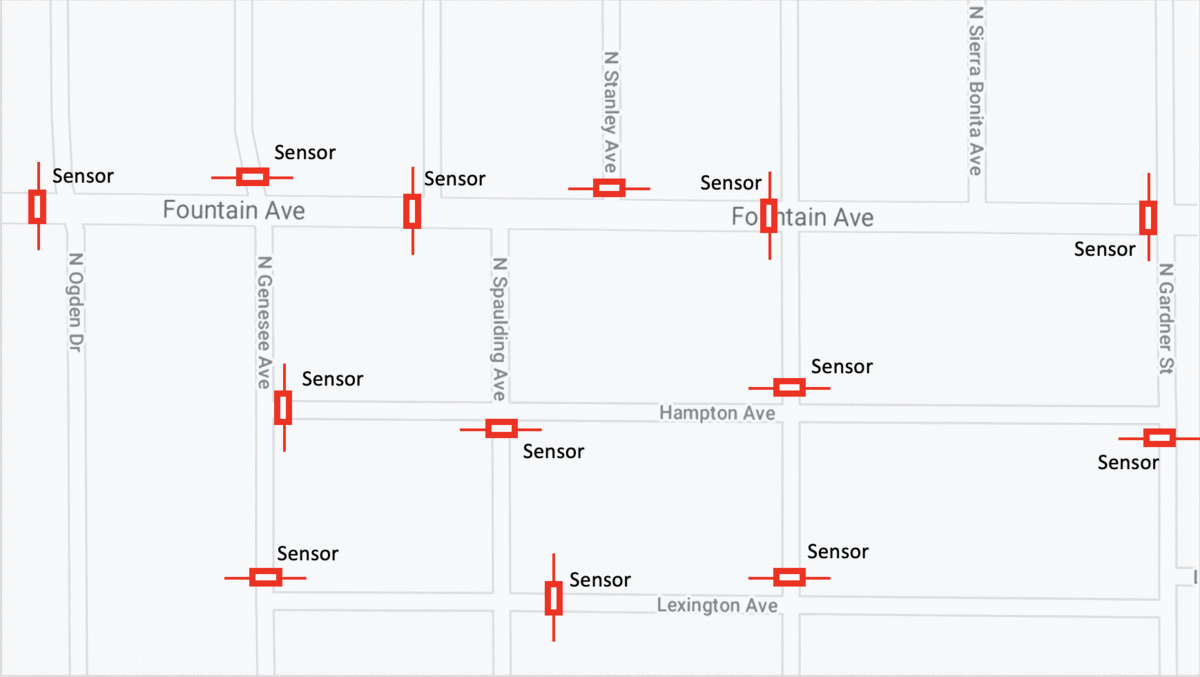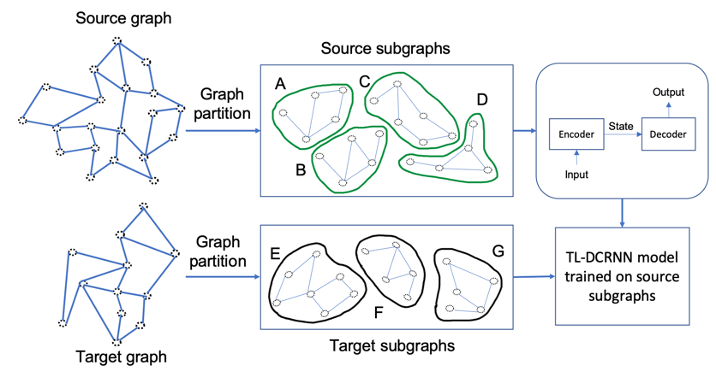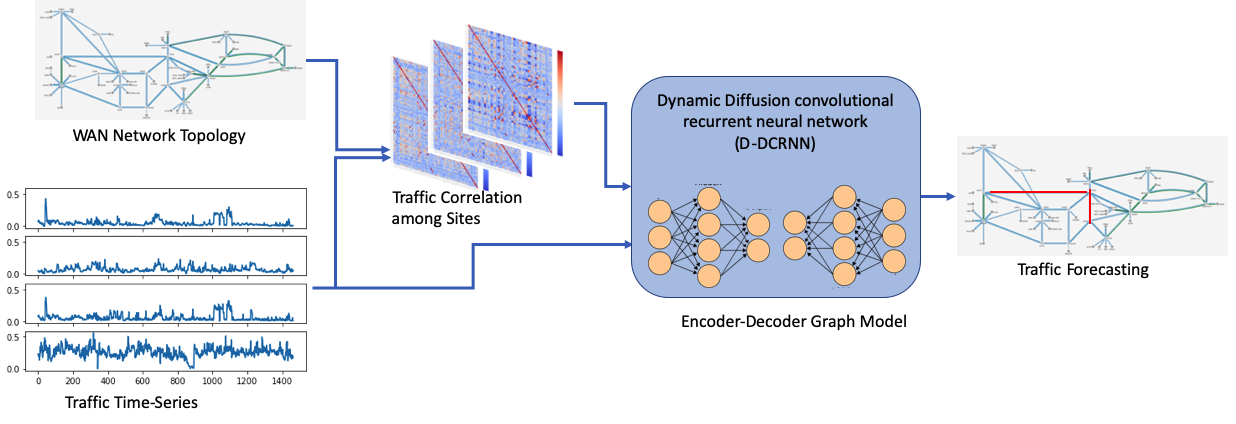Projects
Traffic forecasting using Graph Neural Network

DCRNN model treats the road network as a graph, where each sensor location corresponds to a node, edges are the connectivity between the nodes and, the edge weights are the driving distance.
Transfer learning with graph neural networks for short-term highway traffic forecasting

Transfer Learning-DCRNN (TL-DCRNN) partitions the large highway network withhistorical data into a number of subgraphs using a graphpartitioning method. These subgraphs are used to train thethe encoder-decoder architecture with diffusion convolutional recurrent neural network cells. Given an unseen graph during inference,TL-DCRNN partitions the graph and uses the trainedmodel for short-term traffic forecasting
Dynamic Graph Neural Network for Traffic Forecasting in Wide Area Networks

Dynamic-DCRNN (D-DCRNN) model architecture. It takes an adjacency matrix computed from the current state of the network traffic amongthe sites of the WAN network topology and the traffic as a time-series at each node of the graph. The encoder-decoder deepneural network is used to forecast the network traffic for mutiple time steps